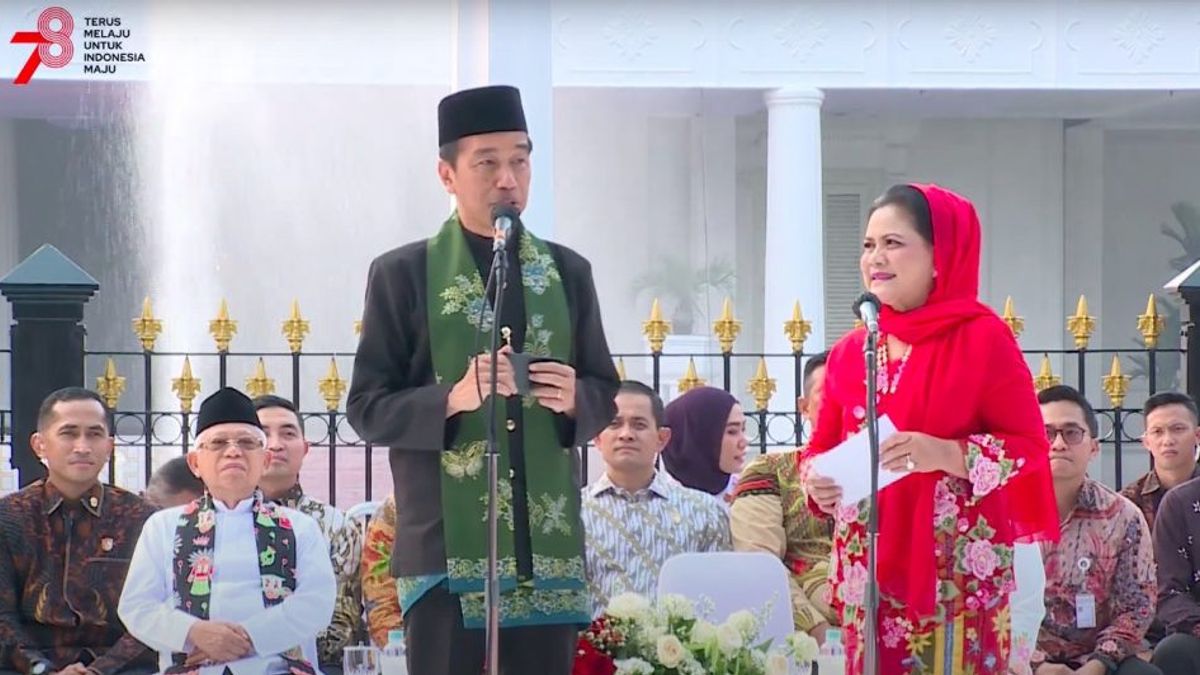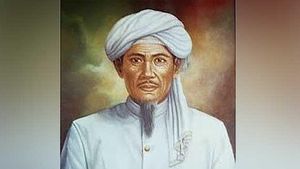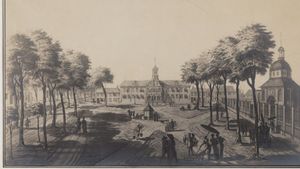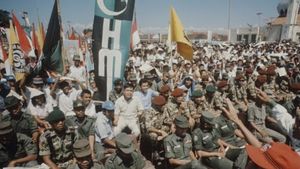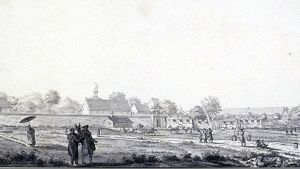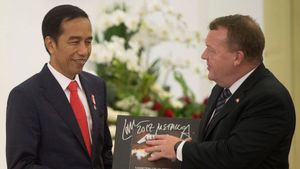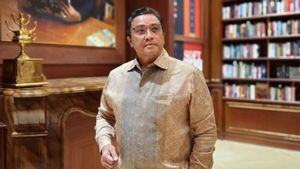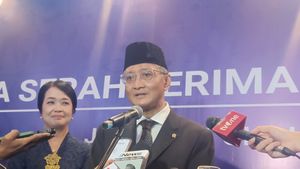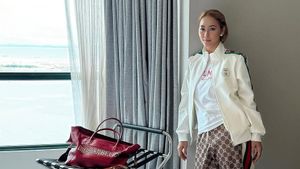JAKARTA - There is no doubt about the existence of demang as a gang of Dutch colonialists. They are often assigned the power of attorney to collect taxes throughout Batavia. Whoever refuses to pay taxes, the Dutch gave power of attorney to punish him. From stealing property to livestock.
The existence of demang in fact did not die in the modern era. The style of clothing that attracts tribute is then adapted into one of the traditional Betawi clothes. The adaptation then presents the pros and cons.
The Dutch East Indies Colonial Government was never able to work alone to perpetuate colonialism in Batavia. The limited population of Europeans is the estuary. They often borrow the services of other ethnic groups. The natives, especially.
Several Bumiputras were then plotted to become demang. They are tasked with collecting taxes on farmers who work on land owned by European landowners. Demang positions also existed from the end of the 19th century. Those who become demang usually with the blessing of the land owner.
Instead of being only famous for being evil, the demang are also famous for their PERlente and striking fashion appearance. The impression of intimidating small people arises from the use of these clothes. Demang did not hesitate to extort the bumiputras who could not pay taxes to get a loan. From seizing property to livestock.
There are some who are nationalists who create deeply rooted hatred from the Betawi people. They see that they are not much different from seeing the wet (police) servants. Both of them both carry the nuances of hatred.
The rebellion that arises from the withdrawal of taxes is proof. Farmers are usually led by a Jago Betawi who appears against the Dutch demang and colonialists. The heroic story is present in the figure of Kaiin, Father Kayah, Entong Tolo, to Entong Fat. The rebellion became a form of plenary hatred of the Betawi people against the ferocity of the Dutch.
Entong Tolo, a master and trader from the big hut, who moved to Pagerarang Jatinegara, under the pretext of helping farmers in the land of particles who suffered from tax pressure, robbed the hosts around Sawangan and Jatinegara. Entong Tolo's actions were successfully extinguished, after being arrested by the Sawangan sub-district head who was certainly good at playing punches, because he was nicknamed a brave sub-district head. On the suggestion of a resident in Batavia, Entong Tolo was exiled to Manado with a allowance of 10 guilders per month for six months.
At Condet, the stipulation of a new regulation in 1912, in which the owners have the authority to confiscate or burn the property of farmers who cannot pay the levies or taxes, has drawn revenge, hatred, and resistance to Entong Fat. Especially when the land rental tax is increased by 25 cents each week, with the consequence of a week's comprehensive work as a ransom for farmers who are unable to pay, "explained GJ Nawi in the book May Blow: Typical Silat Pencak Betawi(2016).
It may be that the position of demang with all his behavior has been destroyed during the Dutch colonial era. However, the demang fashion style with its luxury continues to be maintained. Demang clothes were then re-populated through the celebration of the Abang None Election in 1968.
Men wearing demang clothes: white clothes, dark cover suits, geometric batik, pentalon pants, and accessories are recognized as Betawi identity. Even the clothes that are often referred to as tuteltop clothes are later recognized as traditional Betawi clothes.
The choice of Demang clothes was acquired as traditional clothing that brought debate. Some refused. There are also those who support it. The harshest rejection emerged from Betawi Culturalist, Ridwan Saidi. He personally felt that he did not want to wear demang clothes. Especially as traditional Betawi clothing.
He considered that the clothes in demang actually reminded him of being the accomplice of the land master who was oppressing the Betawi people. The man who is familiarly called Babe Ridwan then felt confused with the DKI Jakarta government who chose the demang clothes. The owner of power is considered like he doesn't understand history.
"That's why I was so surprised, when in 1968 when people decided that Demang's clothes were official as traditional Betawi clothes. Where did it come from? In my life I never wanted my body to be wrapped in clothes that used to be worn by the Betawi people's bloodsnudes. "
It should have been known that Demang is an inmate who oppresses Betawi farmers. It should also be known that Bang Pitung killed Demang which harmed Ji'ih, his mass brother. Why are the clothes worn by Demang used as clothes for the greatness of the Betawi people? I really can't stop thinking, "explained Betawi cultural observer Ridwan Saidi in the book Jakarta: From Mapakatera to VOC (2019).
However, not all Betawi cultural observers are in line with Ridwan Saidi. Many also think that demang clothes are the fruit of Betawi creations that are adapted to the development of today. Betawi cultural observer, Masykur Isnan, for example.
He said the presence of demang clothes as traditional Betawi clothing was no longer seen historically, but as a cultural entity. Even if you want to be blamed, then blame yourself as an individual, not for the fashion style.
His assessment was because the distended clothes became the embodiment of all kinds of cultures from various likes of the nation in Betawi merged into one. He saw that the presence of demang clothes actually complemented the presence of other clothes.
SEE ALSO:
Betawi traditional clothes are represented by conscious clothing, demang clothes for official events, and traditional Betawi wedding clothes. People can also be free to wear all traditional Betawi clothes according to their designation.
Everything is distinguished based on its respective functions. In this context, there is also a variety of cultures that are specifically demang, which can be seen in the context of the rich variety of culture that is merged. Chinese, Arabic, Portuguese, and Malay culture. On the other hand, demang clothes display a strong Islamic religious side as a characteristic of Betawi.
It used to be legitimate to be synonymous with indigenous slanderers, but now it means that it becomes wider and less narrow. Demang clothes as traditional clothing are displayed as an elegant and charismatic part of Betawi's territory in clothes. The culture actually developed according to its time. Clothing at the end of the culvert is present as a cultural entity, no longer as it used to be historically, "explained Masykur Isnan when contacted by VOI, August 7.
The English, Chinese, Japanese, Arabic, and French versions are automatically generated by the AI. So there may still be inaccuracies in translating, please always see Indonesian as our main language. (system supported by DigitalSiber.id)
